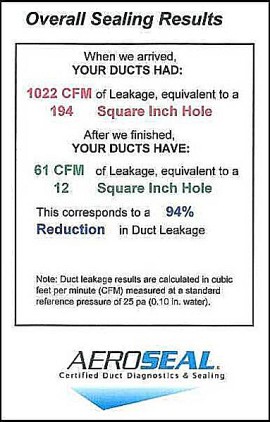Aeroseal Technology Invention. Advantages and Benefits.
The Invention of Aeroseal Technology
- Addressing HVAC Inefficiencies: Introduction to the common challenge of air duct leakage in buildings and the need for an innovative solution.
- Breakthrough Solution: The development of Aeroseal technology, a revolutionary approach to sealing duct leaks from the inside out.
Advantages of Aeroseal Technology
- Efficient Sealing Process: Explanation of how Aeroseal effectively seals leaks, enhancing overall HVAC system performance.
- Industry Recognition: Highlighting the accolades and awards received by Aeroseal technology for its innovation and effectiveness.
Benefits of Aeroseal Technology
- Energy Savings: Details on how Aeroseal reduces energy bills by improving HVAC efficiency.
- Improved Indoor Air Quality: Discussion on the role of Aeroseal in reducing indoor pollutants and allergens.
- Enhanced Comfort: Description of how Aeroseal leads to more consistent and comfortable indoor temperatures.
- Environmental Impact: Information on the reduction of greenhouse gas emissions through improved HVAC efficiency.
Aeroseal at City Ventilations
- Our Commitment: Emphasizing City Ventilations' dedication to providing this advanced technology and the expertise of Vitali Mossintsev in delivering top-notch service.
- Custom Solutions: Offering tailored Aeroseal services for both residential and commercial settings.
Aeroseal Process: Revolutionizing Duct Sealing
Innovative Sealing Technology
- Aeroseal Duct Sealing is a patented technology that efficiently seals duct leaks from the inside out. Utilizing advanced software, it accurately measures and addresses duct leakage in both residential and commercial settings.
The Sealing Procedure
- Preparation: Technicians prepare the system by blocking furnaces, fans, and grilles.
- Application: Injection of aerosolized vinyl polymer particles into the pressurized duct system.
- Effective Sealing: The particles adhere to leak edges, effectively sealing them.
Developed by Experts
- Originating from Lawrence Berkeley National Laboratory's Indoor Environment Program, this technology was rigorously tested and is backed by significant research funding.
Patents and Licensing
- Patent History: Initial patents were granted to the University of California in 1996 and 1999.
- Exclusive Rights: Aeroseal holds an exclusive license for this groundbreaking technology.
Comprehensive Benefits
- Energy Efficiency: Potential for significant energy savings, although results may vary.
- Improved Air Quality and Comfort: Ensures even temperatures, enhanced indoor air quality, and reduced odors.
- Solutions for Commercial Buildings: Addresses airflow and ventilation issues, in addition to energy conservation.
Detailed Process for Optimal Duct Sealing
- Pre-Sealing Preparations: All registers are meticulously closed with foam plugs. A small access hole is created in the supply or return air plenum for the Aeroseal machine, and critical components like the indoor coil and furnace are protected with foam plugs.
- Application: The Aeroseal machine is connected to the duct system. Its unique sealing system injects adhesive particles that seek out and seal holes and cracks in the ductwork without coating the interior surfaces.
Certification and Warranty
- Post-Sealing Verification: After sealing, the results are verified and shared with the customer, ensuring transparency and satisfaction.
- Solid Warranty: We provide a robust warranty backed by UL testing and years of research. For residential applications, we offer a 10-year warranty, and for commercial applications, a 3-year warranty, ensuring peace of mind and reliability.
Final Steps in the Aeroseal Process
- Measuring the Seal: Once sealing is complete, the technician measures the effectiveness of the seal.
- Sealing Certificate: The Aeroseal software generates a detailed sealing certificate, which includes data on duct leakage before and after sealing, a graph of the sealing process, and the improvement in heating or cooling capacity.
- Tightness Certification: Additionally, a tightness certification is affixed to your duct system, certifying the enhanced tightness post-sealing.





